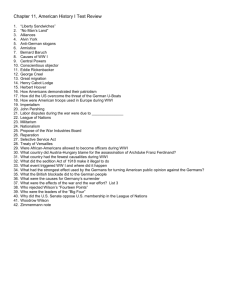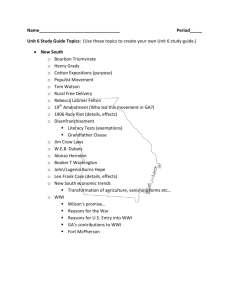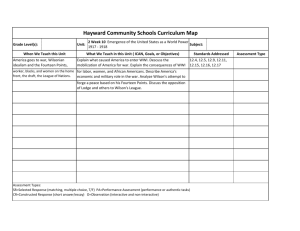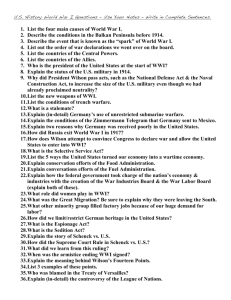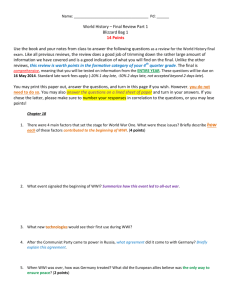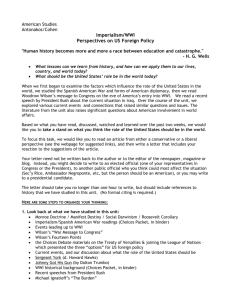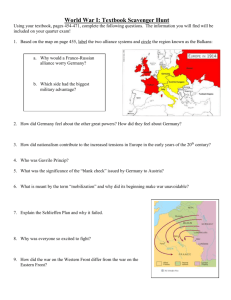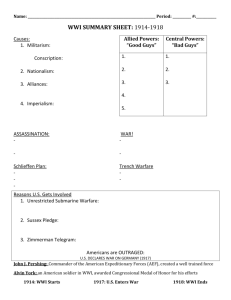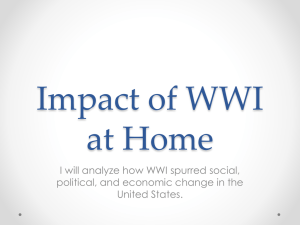WWI Home Front: Business, Liberties, & Social Change
advertisement
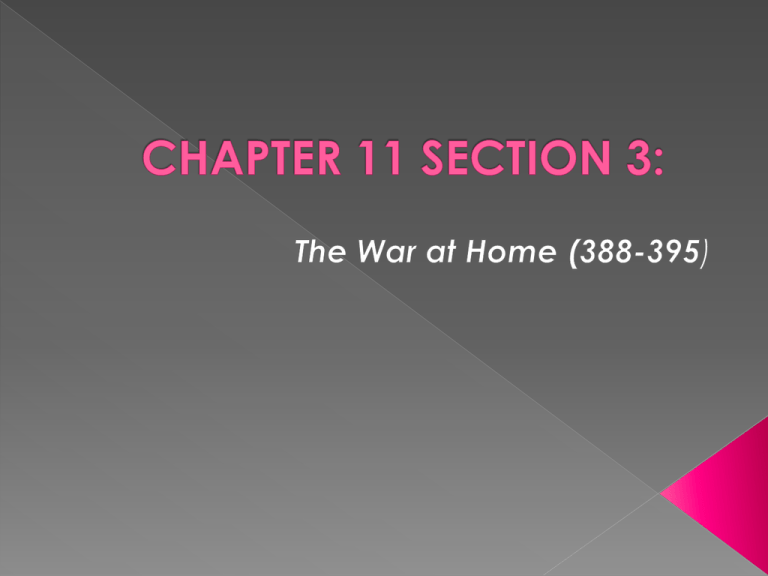
Explain how business & government cooperated during the war; Show how the government promoted the war; Describe the attacks that occurred on civil liberties; Summarize the social changes that affected African Americans and women. Due to the immense scope of WWI the entire economy had to be refocused on the war effort as our economy shifted from producing consumer goods to producing war supplies. Too complex & important to be left to “free market” forces, so Congress gave Pres. Wilson direct control over major aspects of the economy (set prices & control or “nationalize” production of certain industries) WAR INDUSTRIES BOARD: encouraged mass production & standardization to significantly increase the economy’s output RAILROAD ADMINISTRATION and FUEL ADMINISTRATION: Other federal agencies that helped manage the US economy during WWI to maximize production to meet war demand. Wages rose across the board but overall household income didn’t change much due to rising food & housing costs. Stockholder profits soared. *So income disparity between labor & mgmt. worsened; The National War Board told disgruntled laborers to “work or fight” Eventually worker conditions improved. Hoover oversaw this agency responsible for food PRODUCTION & CONSERVATION so more would be available for war effort Individual household food production was encouraged. As a result - US food shipments to the Allied troops tripled & American farmers income improves dramatically. War Financing: strategies needed to raise $$ & keep the public supporting the war effort. The 35.5 billion we spent on WWI was raised through TAXES & PUBLIC BORROWING through the sale of BONDS. PROPOGANDA (biased communication designed to influence people’s thoughts & actions). The Committee on Public Information (CPI) coordinated these gov. messages. The messages promoted Patriotism BUT deepened hatred & violence against certain ethnic groups & those opposed to the war. A kind of “war hysteria” developed in the US - & even Pres. Wilson worried about it (p. 381); ANTI-IMMIGRANT HYSTERIA: attacks on the freedoms of immigrants from “enemy nations” escalated. Germans especially were negatively effected & were the targets of vicious attacks. ESPIONAGE & SEDITION ACTS: Laws by Congress that fined & prosecuted people for “interfering with the war” or “saying anything disloyal or profane or abusive about the government or the war effort.” Although these laws violated 1st Amendment rights, 1000’s were arrested & Socialists & labor leaders faced very tough times. African Americans – public opinion about war support was divided among this group. The Great Migration – large scale movement of Southern blacks to cities in the North. Women in the War – women made their mark in previously male only jobs& contributed heavily to the war effort resulting in increased support for their = rights & the 19th Amendment (right to vote) was their ultimate reward. Flu Epidemic of 1918- about ¼ of the US population was affected devastating the economy & morale at home & at war. Half a million Americans died before it ended suddenly in 1919 shortly after the “war to end all wars” ended. WWI on the home Front (25 mins) Home Front during the War Wrap Up US Propaganda examples (2 mins) Nova on the 1918 flu (12 mins) “Pandemic = epidemic over a large area.
